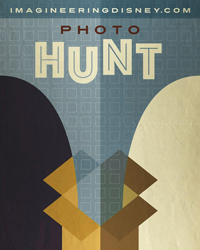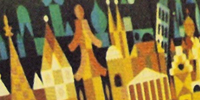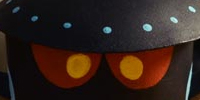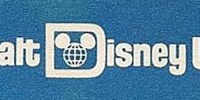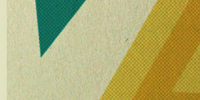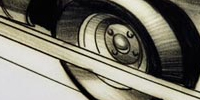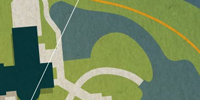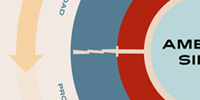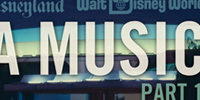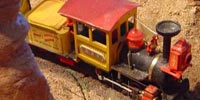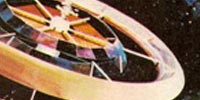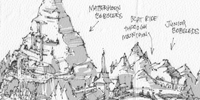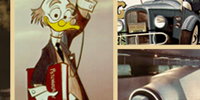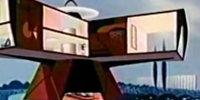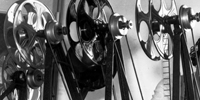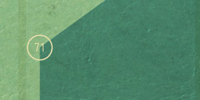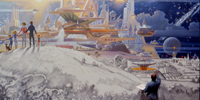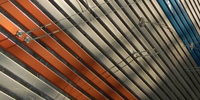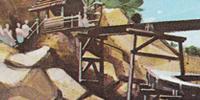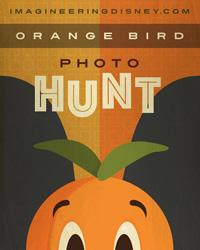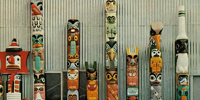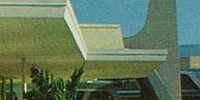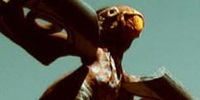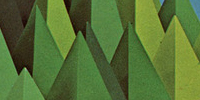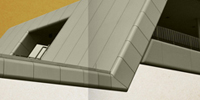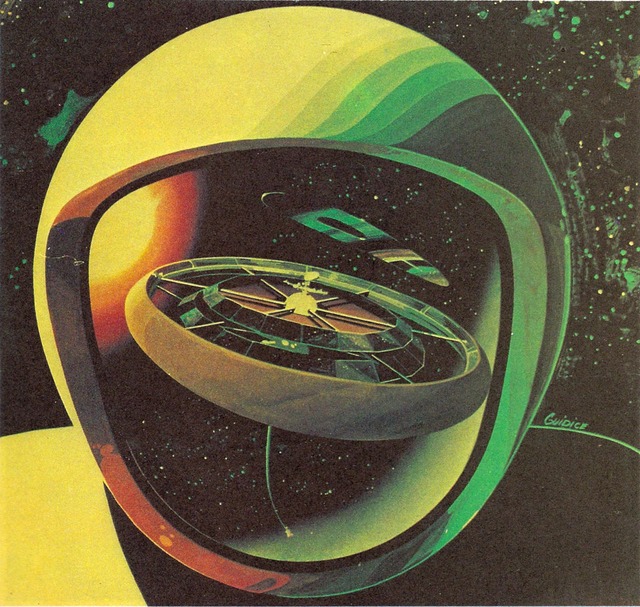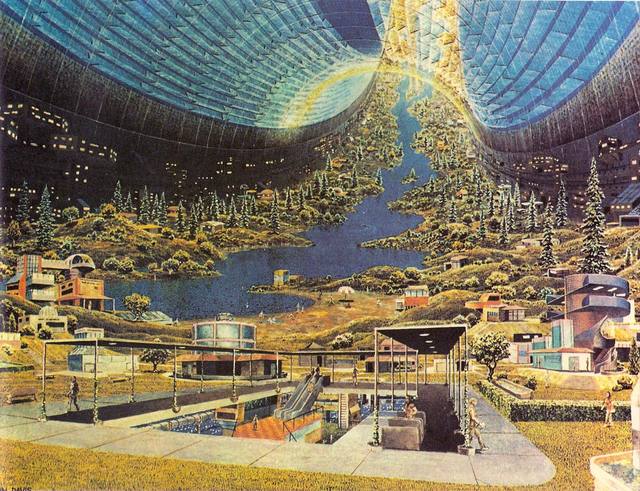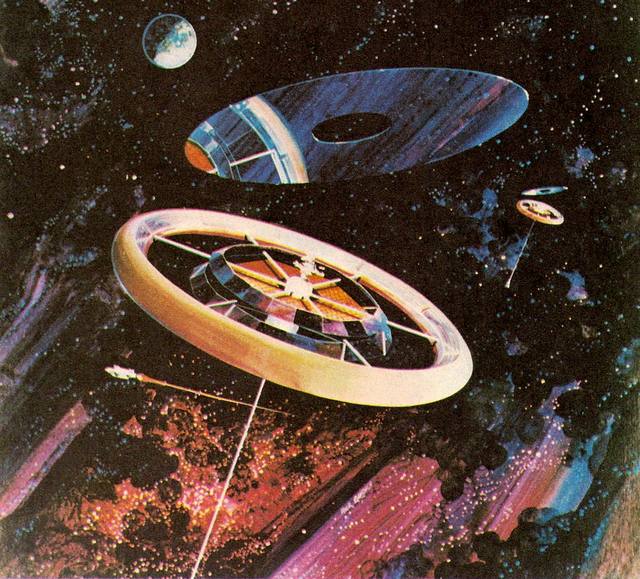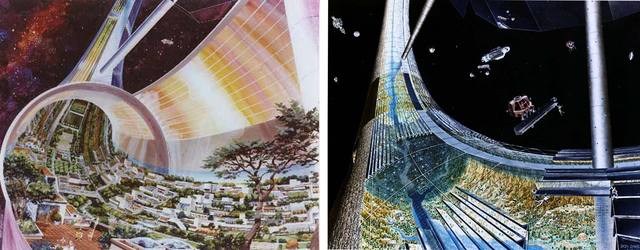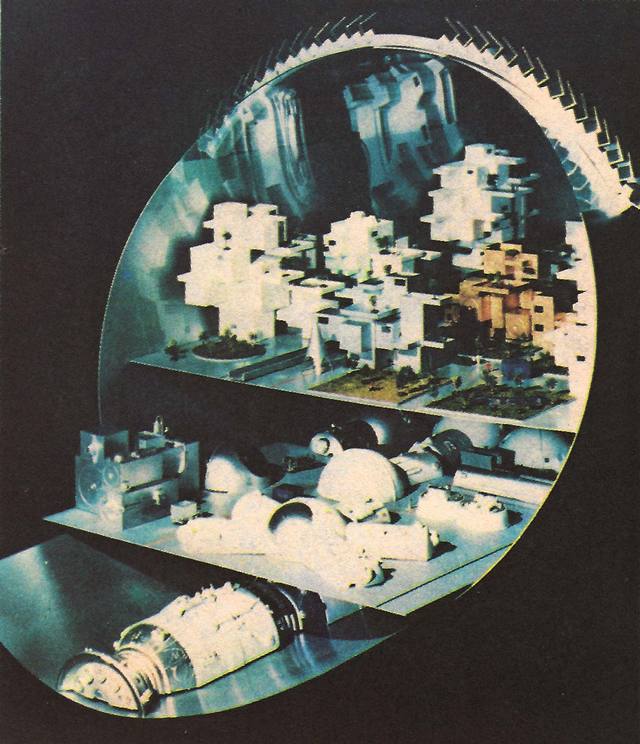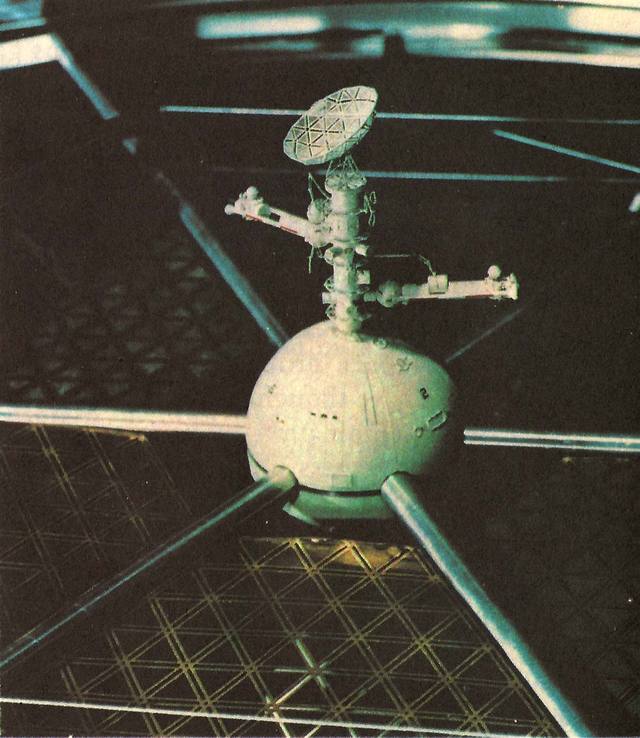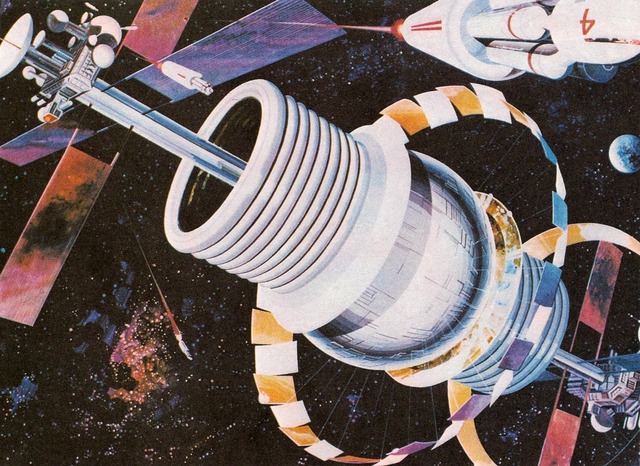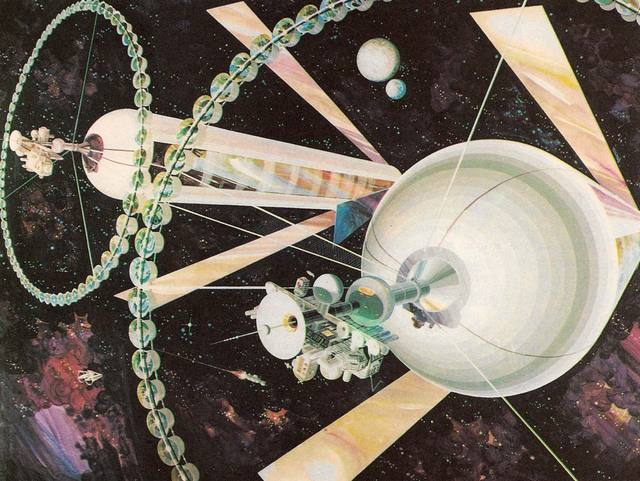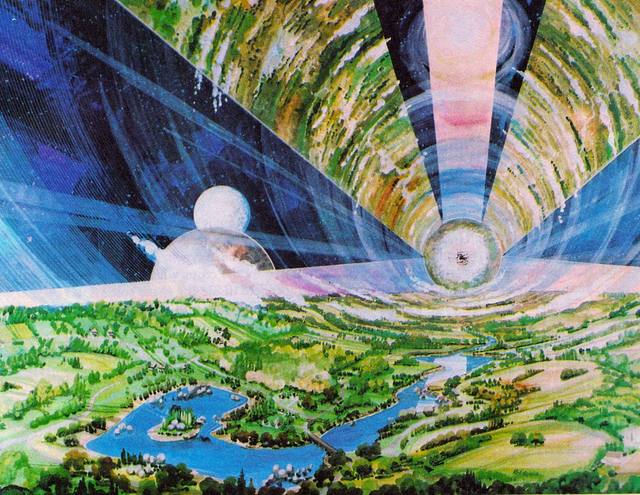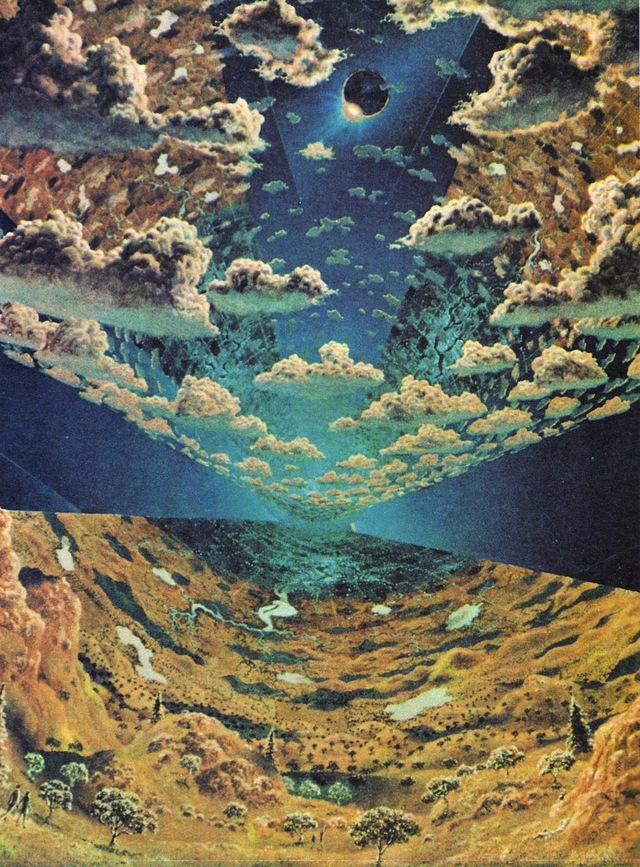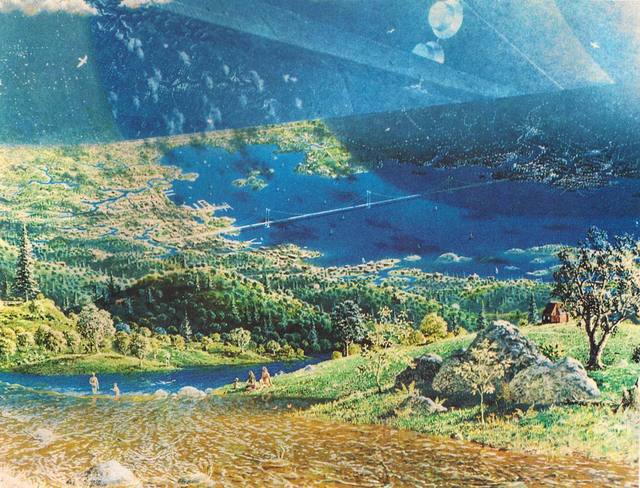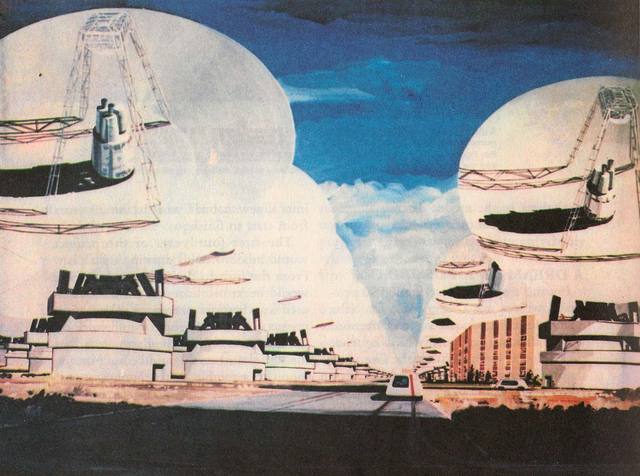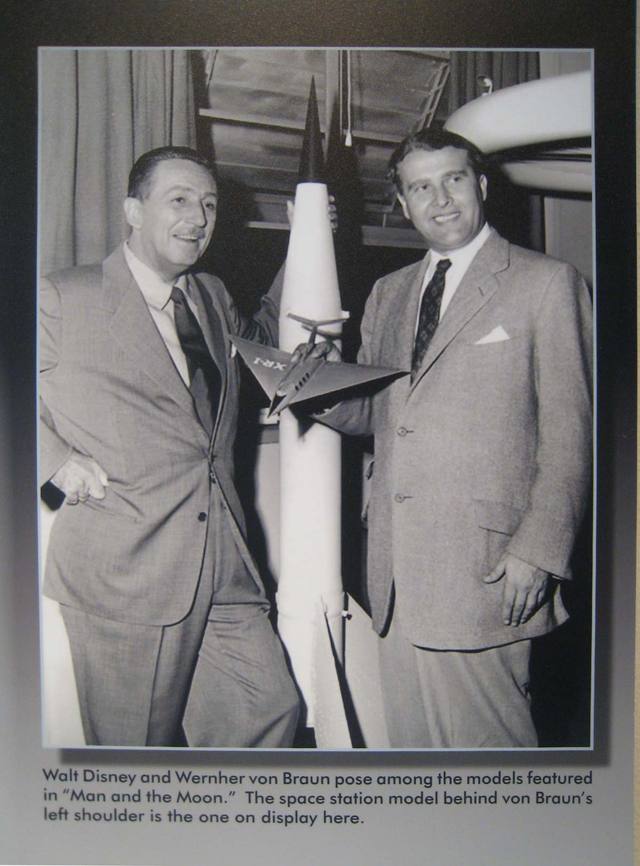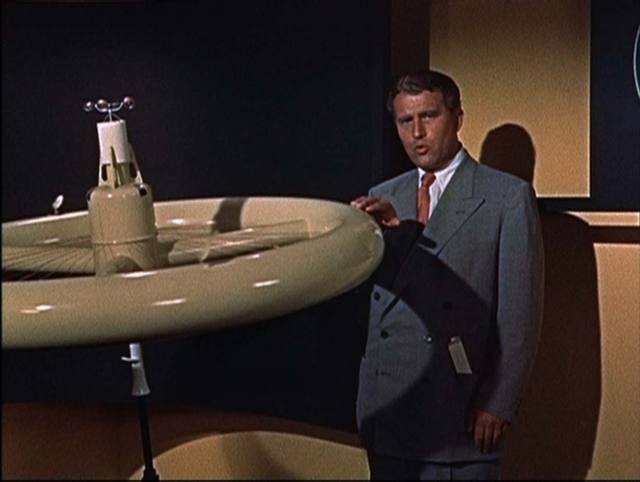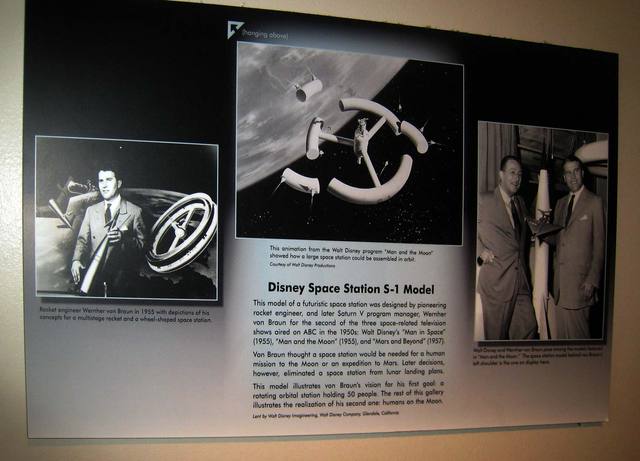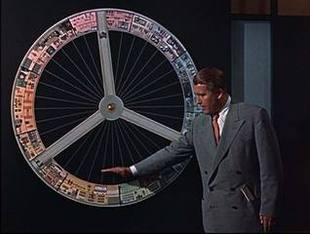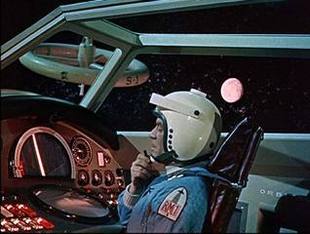The Fantasy of Space Colony Living
 Admin
Admin Ultimate residential living could only mean one thing- life in the City of EPCOT. That is if you are on Earth. What about orbiting around the planet in a man-made rotating colony? THAT is the ultimate in future living, by golly. Better than living on the moon or even Mars itself.
Fantasy or Reality?
This idea wasn't always in the category of comic book fiction or sci-fi cinema. (Though 2001: A Space Odyssey featured a fantastic rotating space colony). It may be viewed as fantasy today but a few short decades ago it was considered to be real-life preparation for something quickly becoming a reality. The following concepts come from NASA engineers, futurists, illustrators, and Walt Disney and co.
Space colonies were once a serious goal. And a fantastic one at that. The basic idea is a floating city in one shape or another rotating at a calculated speed to create the right amount of centrifugal force and therefore simulated Earth-like gravity for its inhabitants. These enclosed colonies would be complete with housing, controlled sunlight, oxygen of course, plants, crops, animals, rivers, fantastic transportation systems, and killer views.
Three Main Space Colony Concepts
1) Wheel-Shaped
How fantastic is it that NASA commissioned illustrations like these in order to visually share their ideas. This particular colony would house up to 10,000 colonists. Inhabitants would enjoy artificial gravity by means of centrifugal force. The ground would be positioned to where people stand with their heads toward the hub of the station. This means you could travel half way around the station and be "up-side-down" from where you started.
The center hub of the station will have almost no simulated gravity which makes for easy loading and loading of transport ships. Elevator shafts would lower inhabitants from the hub to the outer ring, with gravity increasing along the way.
This photo of a FANTASTIC model (which I just recently dug out of an old book of mine) shows not only the cool looking residential area of the outer ring but the underlying "utilidors" if you will.
This detail of the hub shows docking facilities, antenna, and access to spokes to the living area. Between spokes you see solar power cells.
2) Spherical
Horizons, anyone?? The "Bernal Sphere" as it is called has a varied degrees of simulated gravity. Along the equator of the sphere gravity is "normal". As you move toward the poles gravity lessens. Recreational activities could center around these no-to-low-gravity areas to take advantage of this near weightlessness.
The layered rings on either end of the sphere would house crops, chickens, and cows.
Who needs "Soarin'" when you've got that cool 70's red hang glider you launch from zero-gravity, with a view this great??
3) Cylindrical
This concept would be as long as 19 miles with a diameter of 4 miles. Jeepers!
You could walk to the opposite surface of the cylinder, look "up" and see people, lakes, and houses "above" you. Weird yet so super intriguing.
Something very fascinating within this concept is the idea of simulated night. While revolving around Earth, an eclipse would form as Earth blocks the space colony's view of the sun every "evening".
A mammoth colony would eventually be constructed to house hundreds of thousands of people. An area the size of San Francisco Bay would easily fit inside this enormous structure.
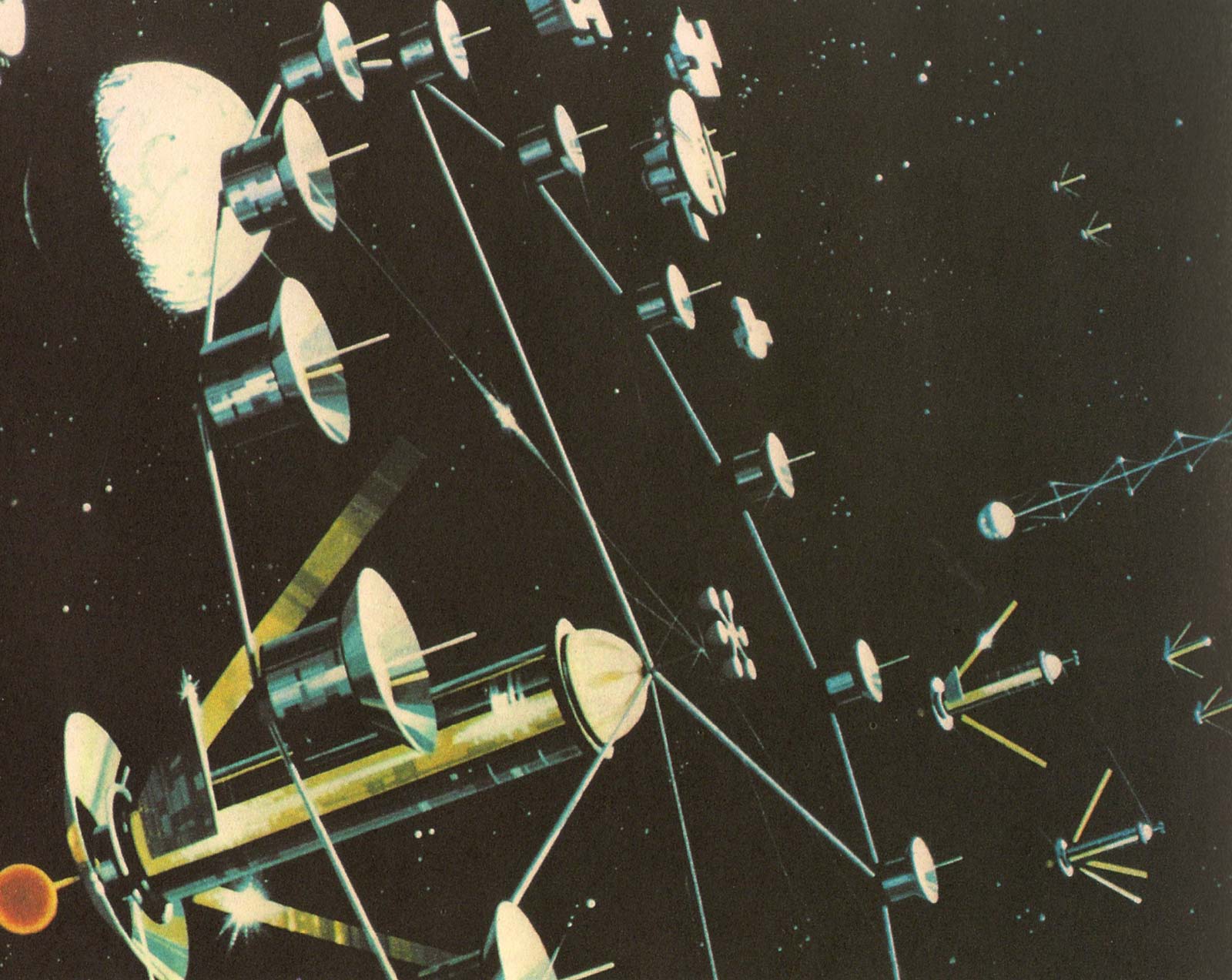
The teacup-looking modules are agricultural stations.
This concept was predicted to be feasible by the end of the 20th century with possibilites of being built as early as the early 1990s. Hmmm.
Is This Possible?
A small portion of the structures would be built in pieces on Earth then transported into space. The majority of the components would originate on the moon. The moon?? Yep, the moon. Colonists would enjoy little amounts of wood and plastic. These materials would have to be shipped from Earth at an enormous cost, whereas aluminum and ceramic could come from the nearby moon. And cheese.
Not only would the moon provide valuable building materials, it would be an outpost for extraterrestrial discovery! "Project Cyclops" is a plan for a series of giant radiotelescope antennae which would be used to detect radio signals from alien planets 1,000 light year away. And they'll drive around in cool electric trams with red stripes.
Walt Disney's Space Colony
Walt, the visionary, like to surround himself with other visionaries. Wernher von Braun joined forces with Walt and famed animator Ward Kimball to produce short films about outer space. The must-own and very funny "Man and the Moon", directed by Kimball, featured the concept of this wheel-shaped station.
Much smaller than the colonies shown earlier, this station was to house 50 men for the purposes of inspecting the moon before the first humans were to ever set foot on its surface.
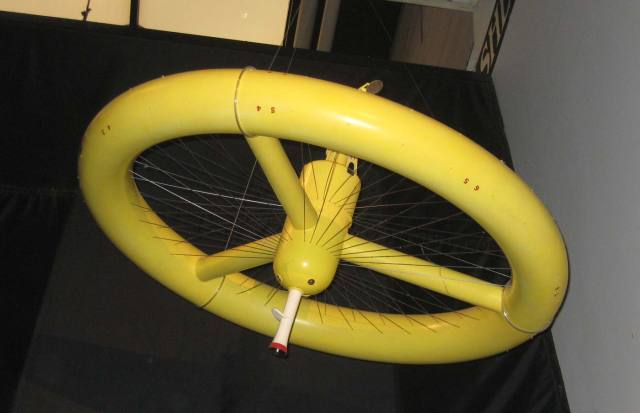 A recent photo of the actual model used in "Man and the Moon" on display at the Smithsonian Air and Space Museum, Washington D.C.
A recent photo of the actual model used in "Man and the Moon" on display at the Smithsonian Air and Space Museum, Washington D.C.
"Man and the Moon" Screenshots
Next time!: A Space Colony ride concept?? We'll see. It may or may not be in the works amongst the ImagineeringDisney.com staff.
Photos from Mitch's personal collection of books and video. Graphics and Smithsonian photos by Mitch.
 Space,
Space,  Tomorrowland,
Tomorrowland,  Walt Disney
Walt Disney 

